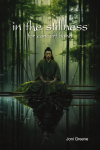The Dawnland begins with a rustling in the wind. Three characters emerge musically to set the stage: the percussion which create the calm and sparkling atmosphere, the flute and alto saxophone - the voice of the Wabanaki, and key clicks that create the rustling wind. The full enchanting melody of the Wabanki people is then presented by solo flute. Based on a pentatonic (five note) scale, the melody is adapted from actual Wabanaki flute music. This melody returns repeatedly throughout the work, often in a developed and altered form. A melodic journey thus ensues, where each change in ensemble "color" or increase and decrease of acoustical warmth, illustrates a point of arrival in the park. When the music is sparse, I imagine simpler landscapes such as a stream or the flight of birds. However when the melody is played by many instruments, I wanted to illustrate more powerful terrains like the crashing of the massive waves into Thunder Hole and the climactic peak of Cadillac Mountain. The listener is therefore carried through the park, a traveler among the Wabanaki, with the development of the first flute melody. The journey all the while moves among a vivid painted sky that musically emerges from time to time in the form of harmonic chorale-like progressions, often highlighted in the brass.
A shift in the work occurs with the entrance of a tribal drum circle. Based on present day Wabanaki drumming and chant, this section features a call and response pattern. Instead of hand drums, the band uses timpani and bass drum, while in place of voices, the wind instruments represent the chanting. A textural crescendo is created by slowly adding more instruments to the sound. This represents a joining of all tribe members in the ceremony. At the peak of the chant, the music transforms into the full melody once more, reaching its final climax. The slow fading of the Wabanaki song is then heard in the last conversation between solo flute and the flute section.
PDF (licensed)




